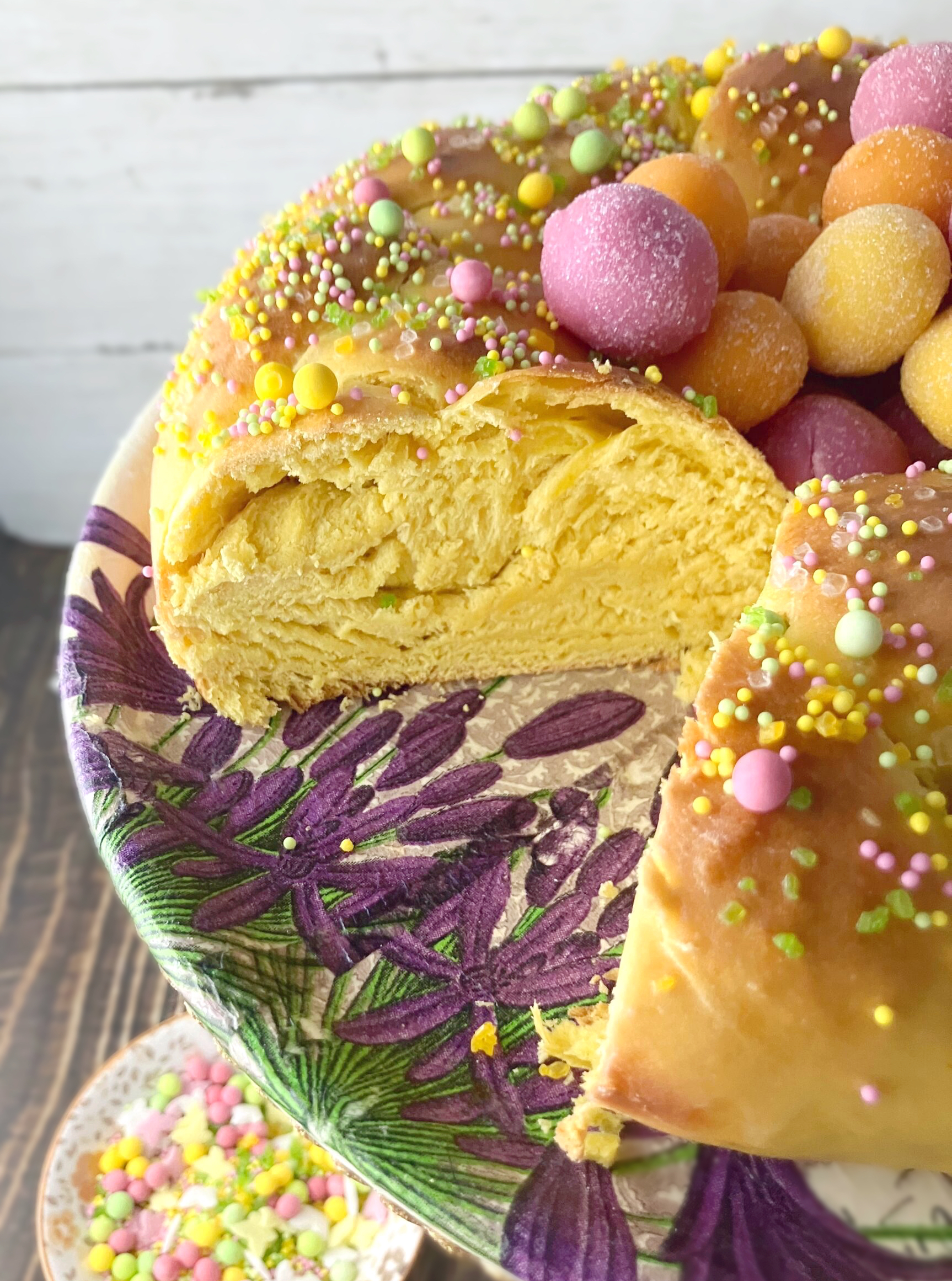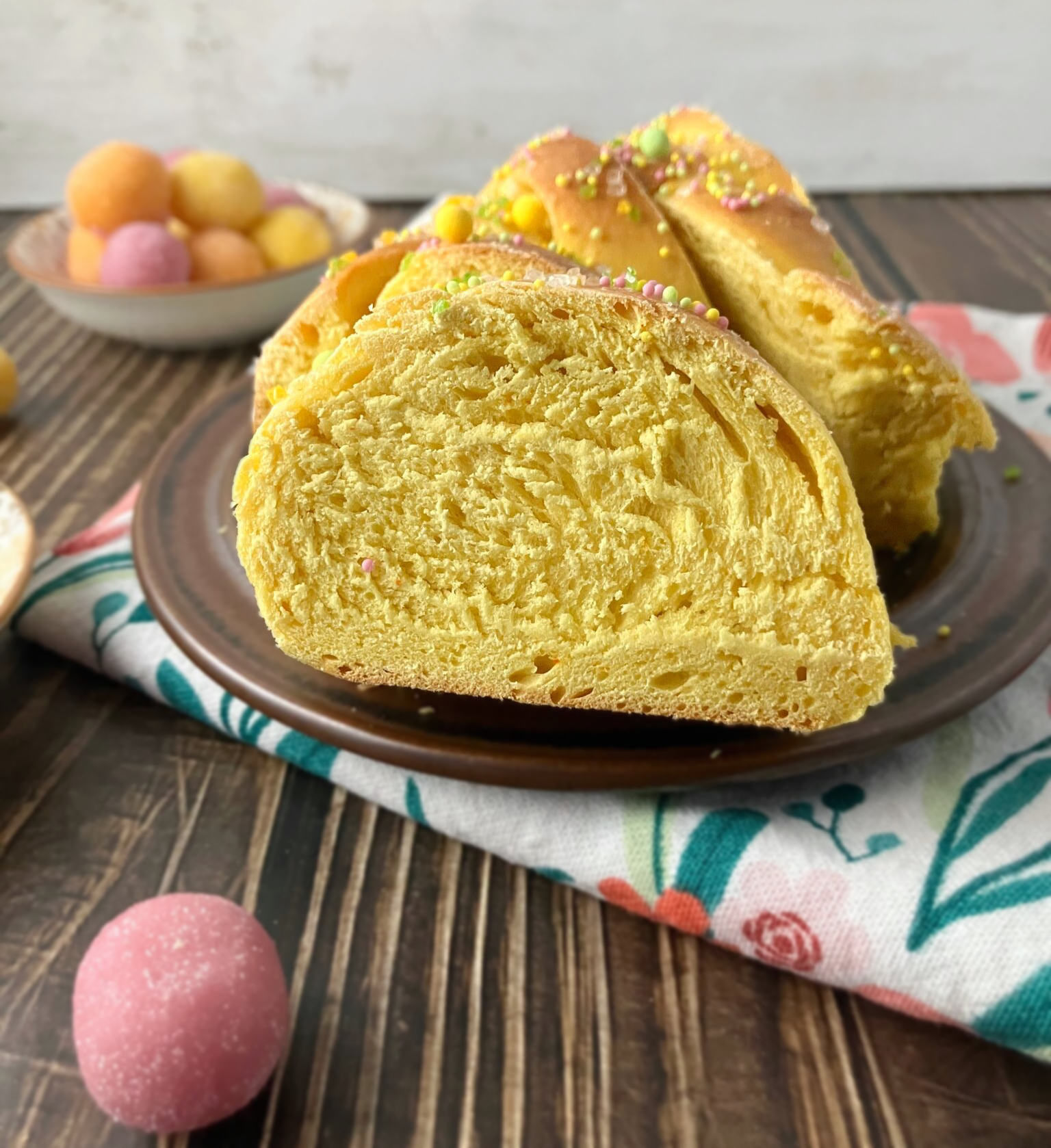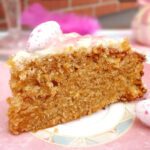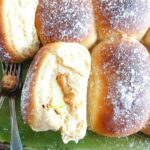Easter Saffron Wreath Bread (with a Simple Glaze)
This Easter, elevate your spring celebrations with a golden, buttery saffron wreath bread. The beautiful hue and delicate floral flavor of saffron are perfect for the season, creating a show-stopping centerpiece for your table. While saffron is often associated with Christmas, it deserves a place in your Easter spread too.
This bread is soft, slightly sweet, and incredibly easy to make. Plus, it’s ideal for those who want a little touch of luxury without the fuss.
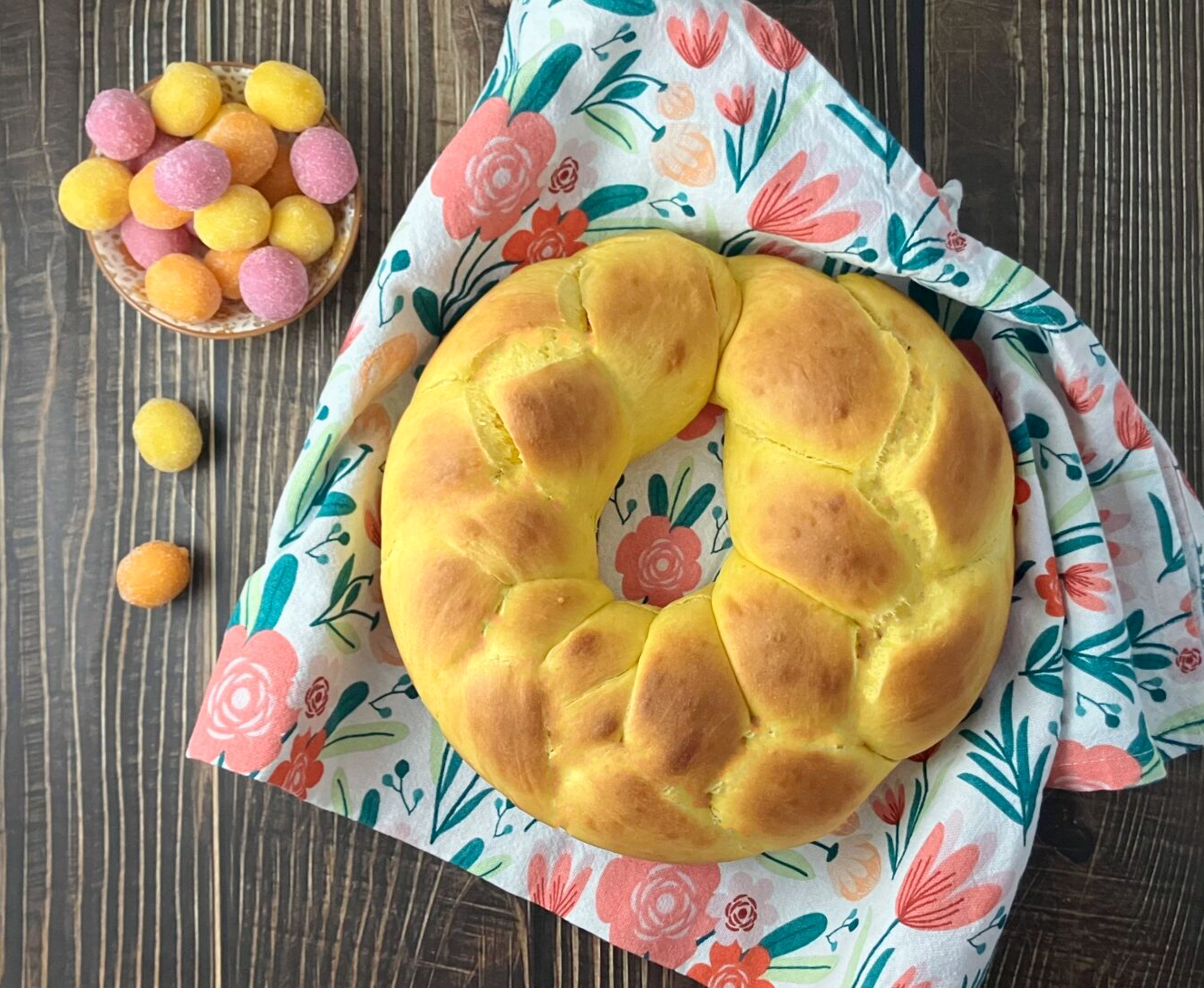
Jump to: |
| Why saffron? |
| Perfect for Easter |
| How to shape the wreath |
| Decorating your saffron wreath |
| Storing the bread |
| More saffron recipes |
As Easter approaches and the flowers begin to bloom, what better way to celebrate than with a stunning saffron wreath bread? Infused with the unique, aromatic flavor of saffron and the rich golden color it brings, this bread is perfect for springtime gatherings. Its soft, buttery texture, braided into a wreath shape and topped with a sweet glaze, makes it a beautiful and delicious centerpiece for your table.
Why Saffron?
Though saffron is often reserved for winter and Christmas baking, it’s such a versatile spice that it deserves to be used year-round. I had a couple of packets left in the cupboard, and considering how expensive they are, wanted to use them up.
I knew that there was a traditional saffron bread in Cornwall, so thought, why not start a new tradition. Easter saffron bread. Okay, I don’t think saffron Easter bread is anything new, but it is not that common, either. If you’re anything like me and have leftover saffron in your pantry, this recipe is the perfect way to use it up while treating yourself and your loved ones to something special.
Saffron is a unique ingredient that adds a beautiful golden hue to your baking and imparts a delicate, floral aroma that enhances both sweet and savory dishes. Its subtle yet distinctive flavor pairs wonderfully with the buttery, slightly sweet dough of this wreath bread, making it the perfect Easter treat.
For this recipe, I decided to take inspiration from traditional saffron breads, but with a fresh twist. Rather than making a loaf or buns, I chose to braid the dough into a wreath, a shape that is not only visually stunning but also perfect for serving at gatherings.
Perfect for Easter
This saffron wreath bread is not just a treat for the eyes; it’s delicious too. The bread has a soft, light crumb that’s slightly sweet with a hint of saffron. It’s perfect for an Easter brunch, a picnic, or just as a beautiful addition to your breakfast spread. The addition of saffron gives it a unique flavor, but it’s subtle enough not to overwhelm, making it suitable for a variety of occasions.
How to Shape the Wreath
Braiding bread may sound intimidating, but trust me, it’s simpler than it looks. Once your dough has doubled in size, divide it into three long ropes, each about 50cm (19″) long. Lay the ropes side by side and press the top ends together, then braid them, alternating from the left and right sides. It doesn’t have to be perfect; the beauty of a homemade loaf is in its imperfection. The key is to keep the braid tight enough to hold its shape but not so tight that it will break during baking.
Once the braid is finished, bring the two ends together to form a wreath. Place it in a greased springform pan and let it rest for a final proof before baking. As the bread bakes, it turns a beautiful golden color, thanks to the saffron, and fills your kitchen with the most heavenly fragrance.
Decorating Your Saffron Wreath
What makes this saffron bread extra special is the finishing touch. Once it’s cooled slightly, brush it with a sweet, runny glaze made from icing sugar and milk. The glaze gives the bread a glossy, sweet coating that adds just the right amount of sweetness without overpowering the saffron flavor.
Now comes the fun part – decorating. I like to keep it simple and festive by sprinkling pastel-colored sprinkles over the glaze. You can use any sprinkles you have on hand, but the pastel ones add a perfect spring touch. For an extra bit of charm, I added some small marzipan eggs to the center of the wreath, paying homage to the traditional Italian Easter breads I’ve seen. It’s entirely optional, but the marzipan eggs add a playful, sweet element that makes the bread look even more festive.
Storing the bread
The bread is best enjoyed fresh, but it will keep for a day or two if stored properly. However, since saffron bread tends to stale quickly, I recommend freezing any leftovers to preserve its freshness. Simply slice the bread, wrap it well, and freeze it for up to a few weeks. When you’re ready to enjoy it, simply defrost and warm it up for a delightful treat.
More saffron recipes
I am a lover of saffron in sweet things and baked goods. Here are some of my favorite recipes:
- Saffron biscotti
- Saffron cake
- White chocolate and saffron braid
- Saffron and white chocolate overnight buns
- Saffron and cranberry cupcakes
- 16 stunning saffron recipes (round-up)
Easter Saffron Wreath Bread (with a Simple Glaze)
Ingredients
Saffron Dough:
- 50g (3½ tbsp) butter
- ½ gram (¼ tsp) ground saffron
- 200ml (⅘ cup) milk
- 14g (4 tsps) dried yeast (see note 1)
- 1 egg
- 100g (½ cup) sugar
- 360-480g (3-4 cups) spelt flour (see note 2)
- 1 tsp salt
- 1 small egg (for the egg wash)
Decoration:
- 1 tablespoon milk
- icing / powdered / confectioners' sugar
- marzipan eggs (optional)
Instructions
Dough:
- Melt the butter in a small pan.
- When melted, add the saffron, and allow the mixture to cook for a couple of minutes.
- Remove from the heat, and stir in the milk and dried yeast. Allow to sit for five minutes or so.
- Add the cooled mixture and the egg to your stand mixer, and give it a quick mix.
- Add the sugar, salt and 300g of flour.
- Work the mixture, gradually adding as much flour as necessary (one tablespoon at a time). Make sure you work each tablespoon in before adding more. Be careful with this step, as too much flour will result in dry bread.
- You will hear your mixer laboring a little harder as the dough becomes thicker (mine clanks about a bit). The dough will be tacky, but you will be able to easily pull it off the attachment. When this happens, switch to a dough hook, and knead for a further five minutes.
- When ready, the dough should be shiny, and drop fairly easily from the hook.
- Cover with a tea-towel and allow the dough to proof for 1-2 hours (just until doubled in size).
- When the dough is ready, grease a large springform pan (mine is 23cm / 9").
- Pre-heat the oven to 200℃ / 400℉.
- Knock back the dough and divide into three.
- Roll out into long ropes measuring about 50cm / 19" each.
- Place the top of the ropes (furthest away from you) on top of each other and press down.
- Plait / braid the dough. Start by taking the left hand rope and placing it over the middle. Then do the same with the right hand rope. Continue down to the bottom. Keep it fairly tight, but don't create too much tension. Press the ends of the ropes together, just as you did at the start.
- Pull both ends of the plaited dough together to form a wreath, with one end slightly overlapping the other.
- Place inside the baking pan. Cover and leave to rest for 30 minutes.
- When ready, bake in the lower part of the oven for around 20 minutes.
- Remove and allow to cool for a while, remove the springform edge, and leave to cool completely.
Decoration:
- Add one tablespoon of milk to a bowl.
- Add just as much icing sugar as needed to make a very runny paste.
- Brush over the saffron bread, and use any kind of decoration you like (I used spring colored sprinkles).
- To finish off, I added some small pastel coloured marzipan eggs to the wreath's hole. This is entirely optional, but looks so pretty.
- Slice into large chunks, and enjoy! The bread is best eaten the day of baking, but is still good the day after. Saffron bread (like most homemade bread) stales quickly, so anything left over can be frozen.
Notes
- In Sweden we have something called dried yeast. It is used both in warm liquid to proof and also added directly to flour. I am aware that the US has two options for dried yeast, and I believe instant yeast is the most similar for the purpose of making this particular recipe.
- You can use spelt or regular flour for this recipe (just use the same amount).

